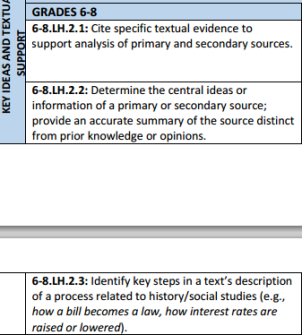On April 15, Indiana released the final draft of new content standards in English/language arts and math that are set to replace the state’s 2010 adoption of the Common Core State Standards. These are the standards that will first be considered by the state’s Education Roundtable on April 21, and then by the state school board on April 28. If both groups give them the thumbs up, these new standards will become official.
As one might expect, these standards have been closely scrutinized by various individuals and groups as they’ve been developed, released, and revised over the past several weeks (an initial draft of the standards was put out on Feb. 20). Let’s consider two separate, somewhat different reviews of what Indiana’s been up to, one by Achieve and one by the Thomas B. Fordham Institute, both Washington-based groups who vigorously support the standards.
Two things to note. First, Achieve based its report on a prior draft of the state’s standards at the request of Indiana Gov. Mike Pence, a Republican, and delivered it on April 1, before the release of the final standards on April 15. So we can see if any of its recommendations were incorporated into the final draft of April 15. (Achieve hasn’t been asked to do another analysis of the most recent, final draft.) By contrast, the review from Fordham, written by Kathleen Porter-Magee, deals with what Indiana released April 15.
Second, although Achieve’s review, which utilized multiple experts, covers both the ELA and math standards, the review from Fordham only covers ELA, so let’s stick with ELA for this blog post.
In the report from Achieve, the authors say that with one significant exception, the standards “substantially” meet the group’s criteria for what students “need to learn to be prepared for college and careers.” The report states that the draft standards “mirror the format and progression” of the common core, but the key missing piece from Indiana’s draft standards is the emphasis on literacy in many subjects. The common core, Achieve notes, includes separate standards for literacy in grades 6-12 in history, social studies, and science.
“Indiana should address the issue of literacy in all the content areas, not just in English language arts classrooms,” Achieve states, in order to fully prepare students for life beyond high school.
So is that issue of literacy across content areas addressed in Indiana’s final draft? From what’s been posted on the website, it appears as though the final draft does incorporate a new section that covers content area literacy in two areas: history/social studies, and science/technical studies. And like the common core, this cross-content literacy piece covers grades 6-12. In fact, let’s look at two sets of standards in history/social studies for 6th graders, one from the common core and one from the additions to Indiana’s final draft. Here’s the “key ideas and details” section from the common core:

And here’s the literacy standard from Indiana’s draft standards dealing with “key ideas and textual support”:

Pretty similar, right? And these aren’t the only sets of standards in cross-content literacy from the common core and Indiana’s final draft that share key characteristics.
But what about Porter-Magee’s review for Fordham? She’s pretty sour about the changes Indiana has made as it’s shifted away from the common core, going so far as to call them “Potemkin standards.” That’s her opinion even though, quoting Achieve’s report, she notes that many common core standards appear verbatim in what Indiana’s developed. Three things are missing from the final draft of Hoosier State Standards that were crucial to common core, she says:
• A clear link between content and comprehension. “Prior to the Common Core, no state ELA standards made explicit the crucial connection between content and comprehension,” Porter-Magee wrote.
• Underscoring the centrality of text selection. “The importance of choosing texts worthy of reading and analysis--and of reading texts that are appropriately complex for the grade--is underscored consistently and unambiguously throughout the CCSS,” according to Porter-Magee.
• Historical and cultural literacy. Porter-Magee says five key texts are specified in the common core, namely “the Declaration of Independence, the Preamble to the Constitution, Lincoln’s Second Inaugural Address, the Bill of Rights, and one Shakespearean play. These texts were chosen specifically because of their cultural, historical, and literary importance.”
“This is a real step backwards for Indiana, especially because their ELA standards have long included an exemplary reading list that helped guide text selection and curriculum,” she says, adding that the lack of guidance about reading materials leaves state educators at the mercy of vendors who can decide what fits their own criteria of appropriate reading for their standards.
Of course, so far I’ve only been dealing with Achieve and Fordham, common-core supporters both. What about common-core skeptics and their views on how Indiana is changing standards?
Sandra Stotsky, a former senior associate commissioner in Massachusetts who helped develop ELA standards for that state, and who’s been a durable common-core opponent, told the News-Sentinel in Fort Wayne that whole drafting of new standards in Indiana has really been, rather than a Potemkin village, a Shakespearean exercise in sound and fury, signifying (almost) nothing.
“It’s basically Common Core. What did they spend all that time doing for the last three months if it comes out looking almost identical?” she said.
On the other hand, James Milgram, a professor emeritus of math at Stanford University and a member of the common core validation committee who declined to give his final approval of the common core math standards, told the newspaper he was “guardedly optimistic” about the final draft’s math standards in grades 3-5, saying they imposed fewer guidelines.
